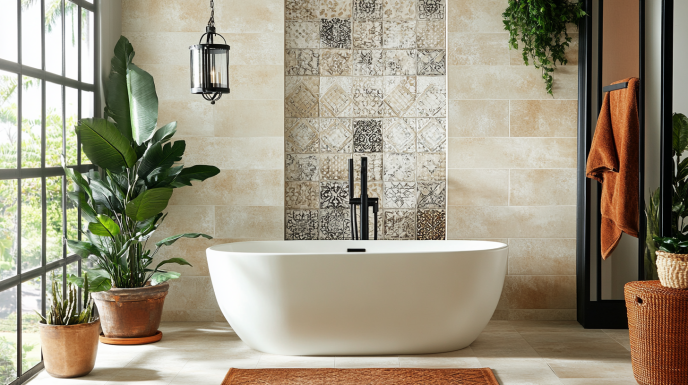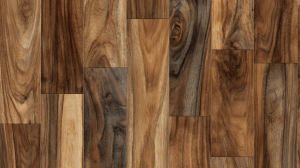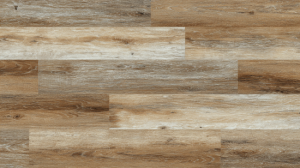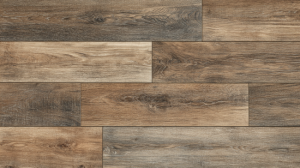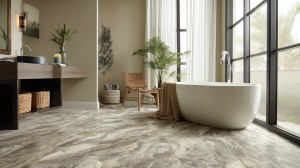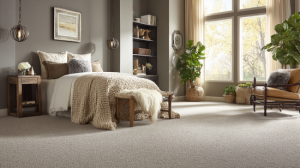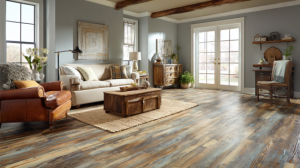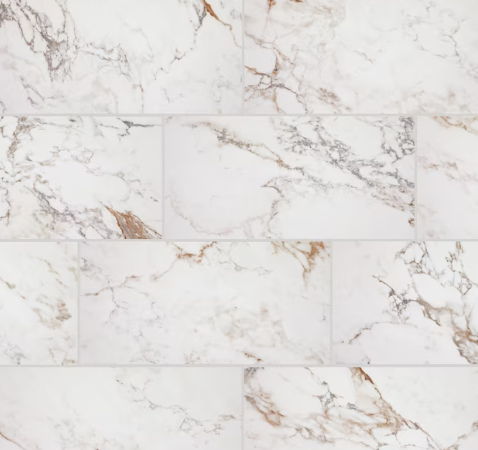
STAINMASTER Calacatta Gem 12-in x 24-in Matte Porcelain Marble Look Floor and Wall Tile (1.95-sq. ft/ Piece)
- STAINMASTER porcelain floor & wall tile is waterproof, slip-resistant, & integrated with antimicrobial product protection, ideal for kitchens & baths
- Calacatta Marble look finish brings a luxurious look to your space
- 50% more slip resistant than ordinary tile when compared to tile that meet a DCOF <=0.42
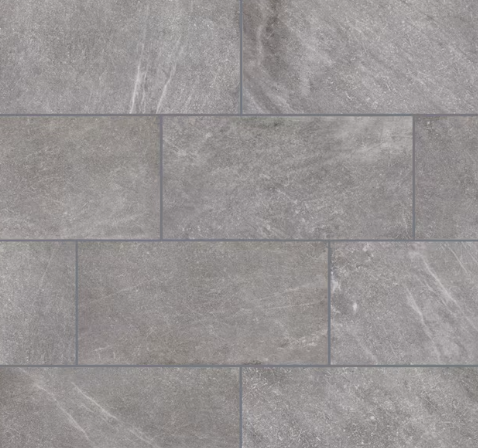
STAINMASTER Harbor Gray 12-in x 24-in Matte Porcelain Marble Look Floor and Wall Tile (1.95-sq. ft/ Piece)
- STAINMASTER porcelain floor & wall tile is waterproof, slip-resistant, & integrated with antimicrobial product protection, ideal for kitchens & baths
- Gray stone look finish brings a luxurious look to your space
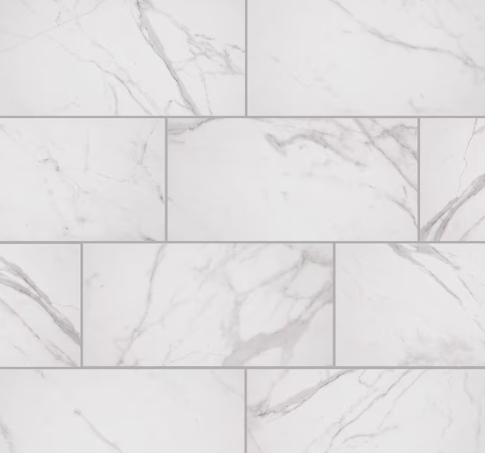
STAINMASTER Calacatta Silver 12-in x 24-in Matte Porcelain Marble Look Floor and Wall Tile (1.95-sq. ft/ Piece)
- STAINMASTER porcelain floor & wall tile is waterproof, slip-resistant, & integrated with antimicrobial product protection, ideal for kitchens & baths
- Calacatta Marble look finish brings a luxurious look to your space
- 50% more slip resistant than ordinary tile when compared to tile that meet a DCOF <=0.42
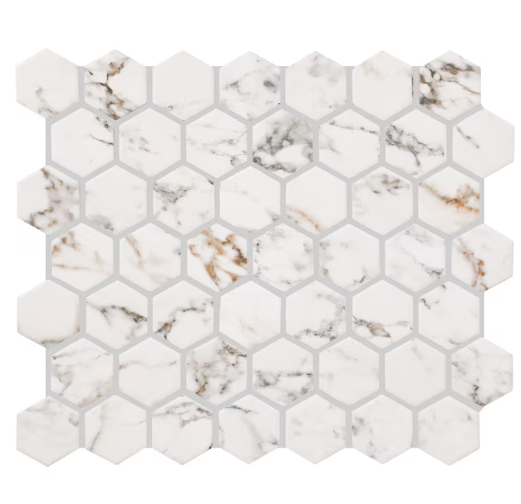
STAINMASTER Calacatta Gem 10-in x 12-in Matte Ceramic Marble Look Hexagon Mosaic Floor and Wall Tile (0.81-sq. ft/ Piece)
- STAINMASTER ceramic hexagon mosaic tile is integrated with antimicrobial product protection and 50% more slip resistance than ordinary tile
- Calacatta Marble look finish brings a luxurious look to your space
Transforming Your Space with Premium Flooring That Works as Hard as You Do
In the world of home improvement, few decisions carry as much weight as selecting the right flooring. It’s not just about aesthetics—though that certainly matters—it’s about finding that perfect balance between beauty, durability, and practicality. As someone who has renovated three homes and consulted on countless others, I’ve developed a deep appreciation for materials that genuinely deliver on their promises. Among these, Stainmaster tile stands out as a remarkable flooring solution that combines exceptional durability with striking design versatility.
I remember walking into a friend’s home after they had completed a major renovation. What immediately caught my eye wasn’t the new paint or furniture—it was the gorgeous stone-look tile running seamlessly from their entryway through their kitchen. Two rambunctious dogs and three children later, these floors still look immaculate. When I asked about their secret, the answer was simple: Stainmaster tile.
Today, I’m sharing everything you need to know about this innovative flooring option that’s changing how homeowners think about tile. Whether you’re a first-time renovator or a seasoned home improvement enthusiast, understanding what sets Stainmaster tile apart could be the key to making your next flooring project truly exceptional.
What Exactly Is Stainmaster Tile?
Stainmaster began its journey as a carpet brand, revolutionizing the industry with its stain-resistant technology. Building on this foundation of innovation, the company expanded into the hard surface flooring market with Stainmaster tile—bringing the same commitment to quality and performance.
At its core, Stainmaster tile is a premium luxury vinyl tile (LVT) product designed to mimic the appearance of natural materials like stone and ceramic while offering superior practical benefits. Unlike traditional ceramic or porcelain tiles, Stainmaster tile incorporates advanced polymer technology that creates a more resilient, comfortable, and installation-friendly alternative.
What truly distinguishes Stainmaster tile from standard vinyl flooring is its multi-layer construction. These engineered tiles feature:
- A durable wear layer that resists scratches, scuffs, and daily wear
- A high-definition design layer that replicates natural materials with remarkable accuracy
- A resilient core layer that provides stability and comfort underfoot
- A backing layer that enhances durability and installation performance
This sophisticated construction creates a product that looks premium while performing exceptionally well in real-world conditions. When I first encountered Stainmaster tile at a design showcase, I was genuinely shocked to discover it wasn’t natural stone—the depth of color and realistic texture were that convincing.
Durability: How Stainmaster Tile Stands Up to Real Life
Let’s face it—life happens. Dropped pots, spilled wine, muddy paw prints, and the constant shuffle of daily activity can wreak havoc on flooring. This is precisely where Stainmaster tile shines.
The durability of Stainmaster tile is nothing short of impressive. With its robust wear layer and resilient construction, Stainmaster tile can withstand the demands of high-traffic areas for decades without showing significant signs of wear. This isn’t just marketing hype—it’s backed by rigorous testing and real-world performance.
I recently visited a commercial space that had installed Stainmaster tile in their entryway four years ago. Despite thousands of people walking across it daily, the flooring looked remarkably fresh. The facility manager mentioned they had previously replaced ceramic tile every few years due to cracking and wear issues, but the Stainmaster tile showed minimal signs of aging.
What makes this possible? The secret lies in Stainmaster’s advanced polymer technology. Unlike ceramic or porcelain tiles that can chip or crack under impact, Stainmaster tile offers a degree of flexibility that absorbs shock. This resilience means it can handle dropped items better than rigid ceramic tiles, making it particularly well-suited for kitchens where accidents are inevitable.
Additionally, Stainmaster tile is designed with a specialized wear layer that resists abrasion. This means that high-traffic pathways won’t develop the worn, dull appearance common with other flooring options. For families with children or pets, this durability translates to peace of mind and long-term value.
Waterproof Properties: Beyond Moisture Resistance
Water damage is the nemesis of many flooring materials. From warped hardwood to delaminating laminate, moisture can destroy even premium flooring options. This is where Stainmaster tile truly excels.
Stainmaster tile isn’t just water-resistant—it’s completely waterproof. The 100% waterproof construction means these tiles can be installed in areas where moisture is a constant concern, such as bathrooms, laundry rooms, and basements. Even in the event of flooding or major spills, Stainmaster tile won’t absorb water, swell, or deteriorate.
This waterproof quality stems from the tile’s synthetic composition. Unlike natural materials that can absorb moisture or materials with wood components that can swell, Stainmaster tile’s polymer construction creates an impervious barrier against water. The tight-fitting installation system also prevents water from seeping between tiles and damaging the subfloor below.
I witnessed the practical benefit of this waterproof quality when a neighbor’s dishwasher malfunctioned, flooding their kitchen overnight. While they faced significant repairs to cabinetry and drywall, their Stainmaster tile floor emerged unscathed once the water was removed. The peace of mind that comes with knowing a flooring solution can withstand these real-life disasters is invaluable.
Investment Value: Understanding Stainmaster Tile Costs
Quality flooring is an investment in your home, and understanding the cost factors helps make informed decisions. Stainmaster tile typically ranges from $2.50 to $5.00 per square foot for the materials alone, positioning it as a mid-range to premium option in the vinyl tile category.
While this price point exceeds basic vinyl tile options, it’s generally more affordable than high-end ceramic, porcelain, or natural stone tiles that can run $10-$15 per square foot or more. When you factor in the reduced installation costs (more on that later), Stainmaster tile often presents a more economical total project cost than traditional tile options.
Several factors influence the specific cost of Stainmaster tile:
- Design complexity: Tiles with more intricate patterns or that mimic premium materials like marble may cost more than simpler designs
- Tile size: Larger format tiles may have different pricing than standard sizes
- Finish type: Different surface textures and finishes can affect price
- Purchase location: Pricing may vary between retailers and regions
- Quantity: Bulk purchases often qualify for discounted pricing
What’s particularly valuable about Stainmaster tile is the lifetime cost proposition. While initial expenses matter, the true measure of value comes from how long a flooring solution lasts and how it performs over time. With minimal maintenance requirements and exceptional longevity, Stainmaster tile offers excellent long-term value despite a slightly higher initial investment than basic flooring options.
When one of my clients was debating between ceramic tile and Stainmaster tile for their kitchen renovation, we calculated the 15-year cost of both options, factoring in potential replacement and maintenance. The Stainmaster option emerged as the more economical choice when considering the complete lifecycle cost.
Where to Purchase: Finding Quality Stainmaster Tile
Stainmaster tile is available through various retailers, though availability may vary by location. Major home improvement chains like Lowe’s have historically carried Stainmaster products, often with dedicated displays that showcase the range of available designs.
Specialized flooring retailers and dealers are also excellent sources for Stainmaster tile. These specialty stores typically offer the advantage of knowledgeable staff who can provide detailed information about installation, maintenance, and design options. Many also offer professional installation services, which can be valuable for ensuring optimal results.
For those who prefer online shopping, various e-commerce platforms offer Stainmaster tile, though it’s always advisable to order samples before committing to a large purchase. Seeing and feeling the actual product in your space allows you to assess how it works with your lighting, existing décor, and overall design vision.
When purchasing Stainmaster tile, I always recommend buying from authorized retailers who can verify the authenticity of the product and provide proper warranty information. While discount sources may offer tempting prices, unauthorized sellers may not provide genuine Stainmaster products or honor warranty claims.
It’s also worth noting that availability patterns have shifted somewhat in recent years following Lowe’s acquisition of the Stainmaster brand in 2021. This strategic partnership has positioned Lowe’s as a primary retailer for Stainmaster products, potentially offering exclusive designs and competitive pricing.
Material Science: What Makes Stainmaster Tile Special
The exceptional performance of Stainmaster tile isn’t accidental—it’s the result of sophisticated material engineering and manufacturing processes. Understanding these materials helps explain why Stainmaster tile performs as it does.
At its foundation, Stainmaster tile is classified as a luxury vinyl tile (LVT), but with proprietary enhancements that elevate its performance. The core material is typically a robust PVC composite that provides stability while maintaining a degree of flexibility that ceramic tiles can’t match.
The wear layer—perhaps the most critical component for longevity—consists of a clear, extremely durable urethane material infused with aluminum oxide. This combination creates a surface that resists scratches, stains, and abrasion remarkably well. The thickness of this wear layer is measured in mils (thousandths of an inch), with premium Stainmaster tiles featuring wear layers of 12-20 mils for exceptional durability.
Between the core and wear layer lies the design layer—a high-definition printed film that creates the visual appeal of the tile. Advanced printing technologies allow for remarkably realistic reproductions of natural materials, complete with subtle variations and textures that mimic stone, ceramic, or other materials. Some Stainmaster tiles incorporate embossed-in-register technology, where the physical texture aligns perfectly with the printed pattern, enhancing the realism.
The backing layer completes the construction, providing dimensional stability and installation flexibility. Some Stainmaster tiles feature acoustic backing that reduces sound transmission—a significant advantage over ceramic tile, which can create echoing in large spaces.
What’s particularly impressive about these materials is how they work together to overcome the limitations of traditional hard surface flooring. The slight resilience makes the floor more comfortable underfoot and less likely to damage dropped items. The synthetic composition creates complete waterproof performance. The engineered wear layer delivers exceptional stain and scratch resistance.
Cleaning and Maintenance: Keeping Stainmaster Tile Looking Fresh
One of Stainmaster tile’s greatest advantages is its low-maintenance nature. Unlike natural stone that requires periodic sealing or hardwood that demands specific cleaning protocols, Stainmaster tile remains beautiful with minimal effort.
For routine cleaning, a simple sweep or vacuum (using a hard surface setting) removes loose dirt and debris. For deeper cleaning, a damp mop with a mild cleaning solution is typically all that’s needed. The non-porous surface resists absorbing spills and stains, making cleanup straightforward even for challenging substances like wine, tomato sauce, or pet accidents.
Here’s a simple maintenance routine that keeps Stainmaster tile looking its best:
- Daily: Sweep or dust mop to remove grit and debris that could potentially scratch the surface
- Weekly: Damp mop with a pH-neutral cleaner specifically formulated for vinyl floors
- As needed: For stubborn spots, a non-abrasive cleaner and soft cloth can handle most challenges
- Preventative: Use felt pads under furniture legs and lift (rather than drag) heavy items
What’s particularly valuable about Stainmaster tile is what you don’t need to do. There’s no waxing, polishing, or sealing required. The factory finish is designed to maintain its appearance throughout the life of the product without additional treatments. This low-maintenance quality saves both time and money over the long term.
I’ve spoken with numerous homeowners who specifically chose Stainmaster tile for this practical benefit. One busy family with three children under eight years old particularly appreciated how easily their kitchen floor could be cleaned after cooking adventures and art projects gone awry. What would have been disaster scenarios with other flooring options became simple clean-up tasks with their Stainmaster tile.
Design Versatility: Exploring Stainmaster Tile Styles
The aesthetic appeal of Stainmaster tile extends far beyond mere functionality. With an extensive range of designs, colors, and formats, these tiles can complement virtually any interior design vision.
Stainmaster’s design portfolio includes impressive replications of:
- Natural stone looks: Marble, travertine, slate, and limestone with realistic veining and color variations
- Ceramic and porcelain styles: From rustic terracotta to sleek modern designs
- Wood-inspired options: The warmth of hardwood with the practicality of tile
- Contemporary patterns: Geometric designs, textile-inspired looks, and abstract patterns
- Solid colors: Clean, minimalist options for modern spaces
Beyond the visual designs, Stainmaster tiles come in various formats and finishes. Square tiles in dimensions from 12″×12″ to 24″×24″ offer traditional looks, while rectangular planks provide contemporary appeal. Surface textures range from smooth, matte finishes to textured, embossed surfaces that enhance realism and provide better traction.
What makes these design options particularly valuable is their ability to create cohesive flooring solutions throughout a home. The same tile family can often transition seamlessly from dry to wet areas, creating visual continuity where traditional materials would require transitions. A wood-look Stainmaster tile can flow from a living room into a kitchen and bathroom—spaces where actual hardwood would be impractical.
I’ve worked with clients who initially hesitated about using vinyl tile, concerned it would look “cheap” or artificial. After seeing the sophisticated designs available in the Stainmaster line, these concerns quickly evaporated. The depth of color, realistic textures, and premium appearance have convinced even the most discerning homeowners.
Perfect for Wet Spaces: Stainmaster Tile in Bathrooms
Bathrooms present unique challenges for flooring. High humidity, standing water, and frequent temperature changes create an environment where many flooring materials fail prematurely. This harsh reality makes bathrooms an ideal application for Stainmaster tile.
The 100% waterproof construction of Stainmaster tile means it can handle everything from shower splashes to overflowing tubs without damage. Unlike ceramic tile, where water can penetrate through grout lines to the substrate below, properly installed Stainmaster tile creates a waterproof surface from edge to edge.
Beyond water resistance, bathroom floors benefit from Stainmaster tile’s comfort underfoot. The slight resilience makes the tile less cold in winter months compared to ceramic or porcelain. This quality is particularly appreciated during middle-of-the-night bathroom visits or during long periods standing at the vanity.
Safety considerations also favor Stainmaster tile in bathrooms. Many designs offer textured surfaces that provide better traction when wet compared to polished ceramic or porcelain tiles. This reduced slip potential is valuable for households with children or older adults.
From a design perspective, bathroom installations benefit from Stainmaster’s diverse aesthetic options. From spa-like stone looks to bold geometric patterns, these tiles can establish the bathroom’s entire design direction. The ability to extend the same flooring into the shower area (with proper waterproofing systems) creates a spacious, cohesive look that many homeowners desire.
Kitchen Performance: Why Stainmaster Tile Excels
The kitchen remains the heart of most homes—and arguably the space where flooring faces its toughest challenges. From heavy foot traffic to potential for spills and impacts, kitchen floors must perform under pressure. Stainmaster tile rises to these challenges admirably.
What makes Stainmaster tile particularly well-suited for kitchens is its combination of durability and comfort. Unlike ceramic tile, which can cause fatigue during long cooking sessions due to its rigid nature, Stainmaster tile offers a slight resilience that reduces strain on joints and muscles. This quality is especially valuable for avid home cooks who spend significant time in the kitchen.
The stain resistance that gives the brand its name proves invaluable in kitchen settings. From tomato sauce splatters to coffee spills, the non-porous surface resists absorbing colored liquids that would permanently stain other materials. Even notoriously difficult substances like red wine, turmeric, and berry juices can be wiped away without leaving permanent marks when addressed promptly.
Impact resistance represents another kitchen-specific advantage. Dropped utensils, pans, or dishes that might chip or crack ceramic tile are less likely to damage Stainmaster tile due to its slightly yielding nature. This resilience also means the tile itself is less likely to crack if there are minor subfloor imperfections or settling over time.
I recently spoke with a professional chef who installed Stainmaster tile in her home kitchen after experiencing how well it performed in a commercial culinary school. She particularly valued how the floor remained comfortable during marathon cooking sessions and how easily it cleaned up after intensive food preparation. For her, the combination of performance and aesthetics made it the clear choice over traditional commercial kitchen flooring.
Comparative Analysis: Stainmaster vs. Traditional Tile
When evaluating flooring options, understanding how Stainmaster tile compares to traditional ceramic and porcelain tile helps clarify its advantages and potential limitations.
Ceramic and porcelain tiles have been staples in home design for centuries, valued for their durability and timeless appeal. Made from natural clay and minerals fired at high temperatures, these traditional tiles offer excellent durability and a wide range of design options. However, they come with certain inherent limitations that Stainmaster tile addresses.
Installation represents a significant difference between these options. Traditional tile installation is labor-intensive, requiring specialized skills, tools, and materials. The process involves mortar application, precise tile placement, spacers for grout lines, cutting tiles for edges and corners, and finally, grout application and sealing. In contrast, Stainmaster tile often features click-lock installation systems that can be completed more quickly and with fewer specialized tools.
Comfort underfoot presents another notable distinction. Ceramic and porcelain tiles are rigid and often cold, transferring temperature readily from the subfloor. Stainmaster tile’s construction provides better insulation and a slightly cushioned feel that many find more comfortable for extended standing periods.
Maintenance requirements also differ significantly. Traditional tile requires regular grout cleaning and periodic resealing to prevent staining and moisture penetration. Stainmaster tile eliminates these maintenance tasks with its seamless installation options or minimal, easy-care grout lines.
Cost considerations extend beyond the materials themselves. While premium Stainmaster tile may have a similar material cost to mid-range ceramic tile, the total project cost often favors Stainmaster when installation labor, additional materials (mortar, grout, sealer), and long-term maintenance are factored in.
The one area where traditional tile might maintain an advantage is in extreme heat resistance. Ceramic and porcelain can withstand high temperatures, making them suitable for fireplace surrounds or outdoor installations in very hot climates—applications where vinyl-based products may not be ideal.
For most residential applications, however, Stainmaster tile offers a compelling package of benefits that address the primary limitations of traditional tile while maintaining comparable aesthetic appeal and durability.
Stain and Scratch Resistance: Living Up to the Name
The Stainmaster brand built its reputation on exceptional stain resistance in carpeting, and this same commitment to stain protection extends to their tile products. The non-porous surface and specialized wear layer create a formidable barrier against stains of all kinds.
Unlike natural stone or unglazed ceramic tiles that can absorb liquids almost immediately, Stainmaster tile’s surface prevents penetration, allowing spills to remain on the surface where they can be easily wiped away. This quality proves particularly valuable in households with children, pets, or frequent entertaining.
Scratch resistance is equally impressive. The wear layer incorporating aluminum oxide—the same material used in sandpaper—creates a surface that stands up to daily traffic, pet claws, and furniture movement without showing the micro-scratches that can dull other flooring materials over time.
In my experience working with various flooring materials, this combined stain and scratch resistance represents one of Stainmaster tile’s most practical advantages. I’ve seen households with large dogs install these tiles specifically because they maintain their appearance despite challenging conditions that would quickly degrade other premium flooring options.
One client conducted their own informal “torture test” before committing to Stainmaster tile throughout their home. They placed samples in high-traffic areas, deliberately spilled wine and coffee on them, and even allowed their children to drive toy cars across the surface. After two weeks of this intentional abuse, the Stainmaster sample showed minimal evidence of wear compared to other materials they tested simultaneously.
Outdoor Applications: Limitations to Consider
While Stainmaster tile excels in interior applications, it’s important to understand its limitations for outdoor use. Like most vinyl-based products, Stainmaster tile is not typically recommended for uncovered exterior installations due to several factors.
Prolonged UV exposure can cause fading and potential degradation of the material over time. Extreme temperature fluctuations—particularly the freeze-thaw cycles common in many climates—may affect the dimensional stability and longevity of the product. Additionally, the installation systems used for Stainmaster tile are generally designed for controlled interior environments.
That said, some homeowners successfully use Stainmaster tile in covered outdoor spaces like screened porches or covered patios where exposure to direct sunlight and precipitation is limited. These transitional spaces benefit from the tile’s waterproof properties and ease of cleaning while being protected from the harshest environmental factors.
For dedicated outdoor spaces, traditional ceramic, porcelain, or natural stone tiles specifically rated for exterior use remain the more appropriate choice despite their installation complexity and maintenance requirements.
Warranty Protection: Understanding Your Coverage
A quality flooring product stands behind its performance with meaningful warranty protection, and Stainmaster tile is no exception. Typical warranty coverage for Stainmaster tile products includes:
- Lifetime residential warranty against manufacturing defects
- 15-25 year warranty against wear-through of the design layer
- Waterproof performance guarantees
- Stain resistance coverage
What makes these warranties particularly valuable is how they reflect the expected performance lifetime of the product. Unlike some flooring options with limited 5-7 year warranties, the extensive coverage periods for Stainmaster tile indicate the manufacturer’s confidence in long-term performance.
When evaluating warranty coverage, it’s important to understand the specific terms and conditions. Most warranties require proper installation according to manufacturer guidelines and reasonable maintenance practices. Using inappropriate cleaning products or installation methods that deviate from recommendations may void warranty protection.
It’s also worth noting that warranties typically cover replacement materials but may not include labor costs for removal and reinstallation. This distinction makes selecting a quality installer particularly important, as installation-related issues might not be covered under the product warranty.
I always advise clients to retain their purchase documentation and warranty information in a safe place. Taking date-stamped photos of the completed installation provides additional documentation that can prove valuable if warranty claims become necessary years later when memories of the specific product details have faded.
Installation Insights: DIY Potential and Professional Considerations
The installation process for Stainmaster tile represents another significant advantage over traditional ceramic or porcelain tile. The engineering behind these products has created installation systems that are both more efficient and more forgiving.
Many Stainmaster tile products feature click-lock installation systems similar to those found in laminate flooring. These interlocking edges create tight seams without adhesives in many applications. Other versions may use a modified loose-lay approach or adhesive installation depending on the specific product and application needs.
For the DIY-inclined homeowner with basic tools and moderate skills, Stainmaster tile installation is often quite manageable. The ability to cut tiles with a utility knife or simple score-and-snap cutter eliminates the need for wet saws or specialized cutting tools required for ceramic tile. The forgiving nature of the material also means minor subfloor imperfections are less likely to telegraph through to the finished surface or cause cracks over time.
Professional installation remains an excellent option, particularly for complex spaces with numerous cuts or when subfloor preparation is required. Professional installers can typically complete a Stainmaster tile project in significantly less time than comparable ceramic tile installation, reducing both labor costs and the disruption to your household.
Proper subfloor preparation remains essential regardless of who performs the installation. While Stainmaster tile is more forgiving than ceramic, a flat, clean, and structurally sound subfloor creates the foundation for optimal long-term performance. Significant subfloor issues should be addressed before installation begins.
One homeowner I advised was particularly pleased to learn that Stainmaster tile could be installed directly over their existing ceramic tile floor, provided the original tile was securely bonded and the surface was properly prepared. This installation approach eliminated the costly, dusty, and time-consuming process of removing the old tile while still achieving a beautiful new floor.
Maintenance Requirements: Beyond Basic Cleaning
While day-to-day cleaning of Stainmaster tile is straightforward, understanding the complete maintenance picture helps ensure optimal long-term performance.
Unlike hardwood that requires refinishing or natural stone that needs periodic resealing, Stainmaster tile’s maintenance remains consistent throughout its lifespan. The factory-applied wear layer is designed to maintain its protective properties without additional treatments.
A few specific maintenance considerations include:
- Avoid harsh chemical cleaners, particularly those containing bleach, ammonia, or abrasive particles
- Use furniture pads to prevent scratching from heavy pieces
- Place mats at exterior doors to reduce tracked-in grit that can act as an abrasive
- Clean spills promptly, even though the material is highly stain-resistant
- Use proper floor protection when moving extremely heavy items
What’s notably absent from this maintenance list is equally important. There’s no need for waxing, polishing, refinishing, or resealing over the life of the floor. The time and cost savings from these eliminated maintenance tasks add significant value over the floor’s lifespan.
I find that many homeowners appreciate this predictable, minimal maintenance approach—particularly those who have previously dealt with the more demanding care requirements of natural materials. One client specifically switched from marble to Stainmaster tile with a marble look specifically to eliminate the anxiety they felt about potential staining and etching of their natural stone surfaces.
Grout Considerations: Enhancing Your Stainmaster Tile Installation
While some Stainmaster tile products can be installed with minimal or no visible grout lines, others incorporate traditional grouting to enhance the authentic appearance of ceramic or stone. Understanding grout options can significantly impact both the aesthetic and performance of your finished floor.
For installations that utilize grout, premium urethane or epoxy grouts offer superior performance compared to traditional cement-based options. These advanced formulations provide better stain resistance, color consistency, and crack resistance—making them ideal companions to high-performance Stainmaster tile.
The color selection for grout presents important design considerations. Contrasting grout colors create a more defined grid pattern that emphasizes the tile layout, while color-matched grout creates a more seamless appearance. Your choice should align with your overall design vision and practical considerations—lighter grouts may show soiling more readily in high-traffic areas.
Grout line width represents another important decision. Minimal grout lines create a more monolithic appearance and reduce the total grout area that requires cleaning. Wider grout lines emphasize the individual tiles and may provide more design character in certain applications.
For homeowners seeking the most maintenance-free option, some Stainmaster tile installations can utilize tight-fitting installation methods that eliminate or minimize traditional grout lines entirely. These approaches use the precise milling of the tile edges to create nearly invisible seams that don’t require grouting in many applications.
Longevity Expectations: The Lifecycle of Stainmaster Tile
When investing in new flooring, understanding its expected lifespan helps evaluate the long-term value proposition. Stainmaster tile is engineered for exceptional longevity, with proper installation and reasonable care.
In residential settings, quality Stainmaster tile can reasonably be expected to perform beautifully for 20-30 years or more. This lifespan compares favorably with other premium flooring options while requiring less maintenance to maintain its appearance. Commercial installations may have shorter lifespans due to more intense traffic patterns, but still typically deliver 10-15 years of service in moderate-traffic applications.
Several factors influence this longevity:
- Wear layer thickness: Premium Stainmaster tiles with thicker wear layers naturally last longer
- Installation quality: Properly prepared subfloors and correct installation techniques maximize lifespan
- Maintenance practices: While minimal maintenance is required, basic care extends performance
- Traffic intensity: Areas with extremely high traffic may show wear earlier than low-traffic spaces
What’s particularly impressive about Stainmaster tile’s longevity is how it maintains its appearance throughout its lifespan. Unlike some flooring materials that may remain functional but look worn prematurely, Stainmaster tile tends to maintain its aesthetic appeal alongside its functional performance.
I recently visited a commercial space where Stainmaster tile had been installed in a high-traffic corridor eight years earlier. Despite the challenging conditions, the flooring showed minimal signs of wear and maintained its original color and pattern integrity. This performance illustrates the practical benefit of investing in quality materials that truly deliver on their longevity promises.
Environmental Considerations: Sustainability Factors
As environmental awareness continues to influence home improvement decisions, understanding the sustainability profile of Stainmaster tile helps make informed choices aligned with personal values.
On the positive side, Stainmaster tile’s exceptional durability contributes to sustainability by reducing replacement frequency. A flooring product that lasts 25+ years inherently conserves resources compared to options requiring replacement every 10-15 years. The minimal maintenance requirements also reduce the environmental impact from cleaning chemicals and energy-intensive maintenance processes throughout its lifespan.
Some Stainmaster tile products incorporate recycled content, though percentages vary by specific product. The manufacturing processes typically include energy efficiency measures and waste reduction practices aligned with modern environmental standards.
Indoor air quality represents another important environmental consideration. Many Stainmaster tile products are certified for low VOC (volatile organic compound) emissions, contributing to healthier indoor environments. This factor proves particularly valuable for households with allergy sufferers or chemical sensitivities.
End-of-life considerations present challenges common to most composite materials. While vinyl-based products are theoretically recyclable, practical recycling programs for residential flooring removal remain limited in many areas. This aspect represents an opportunity for industry improvement as circular economy principles gain broader implementation.
For environmentally conscious consumers, Stainmaster tile represents a mixed profile with significant advantages in longevity and indoor air quality, balanced against the challenges common to most synthetic flooring materials.
Customer Experiences: What Real Users Say About Stainmaster Tile
Beyond technical specifications and marketing claims, real-world experiences from Stainmaster tile users provide valuable insights into how these products perform in everyday life.
The feedback from homeowners consistently highlights several key advantages:
- Waterproof performance receives particular praise from households with children, pets, or previous water damage experiences
- Durability in high-traffic areas impresses long-term users, especially those who previously struggled with premature wear in other flooring
- Cleaning ease earns enthusiastic endorsements, particularly from busy families and pet owners
- Aesthetic quality surprises many who initially hesitated about vinyl products, with numerous comments about guests mistaking the tile for natural materials
Common critiques center around a few specific points:
- Some users note that despite excellent resilience, Stainmaster tile still doesn’t perfectly match the soft feel of carpet or engineered wood underfoot
- Installation challenges can arise with complex layouts or when working with older homes with significant floor irregularities
- Limited exterior application options disappoint some who wish to create seamless indoor-outdoor transitions
What’s particularly telling is how frequently Stainmaster tile users become repeat customers when flooring additional spaces. This pattern of satisfied customers returning for subsequent projects speaks volumes about real-world satisfaction levels.
One particularly compelling testimonial came from a homeowner in a flood-prone area who had replaced water-damaged flooring three times in seven years. After installing Stainmaster tile, they weathered two significant water events without flooring damage. For them, the peace of mind and reduced replacement costs represented the product’s greatest value.
Conclusion: Is Stainmaster Tile Right for Your Space?
After exploring the comprehensive profile of Stainmaster tile—from its construction and performance to practical considerations like installation and maintenance—the question becomes: Is this the right flooring solution for your specific needs?
Stainmaster tile presents a compelling option for homeowners seeking the aesthetic appeal of ceramic, stone, or hardwood with enhanced practical benefits. Its combination of durability, water resistance, and design versatility makes it particularly well-suited for active households, multi-functional spaces, and areas where traditional hard surface flooring presents practical challenges.
The ideal candidate for Stainmaster tile might be a busy household balancing aesthetic desires with practical needs—perhaps a family with children and pets who wants beautiful floors without constant maintenance anxiety. Likewise, homeowners in areas prone to moisture issues or those renovating bathrooms and kitchens will find particular value in the waterproof properties and design options.
If your priorities include long-term performance, minimal maintenance requirements, and design flexibility, Stainmaster tile deserves serious consideration. The initial investment delivers ongoing returns through reduced maintenance costs, exceptional longevity, and reliable day-to-day performance.
As with any significant home improvement decision, taking time to examine samples in your actual space, under your specific lighting conditions, and alongside your existing décor elements helps ensure satisfaction with your selection. Many retailers offer sample programs specifically to facilitate this important step in the decision process.
Whether you’re renovating a single room or planning flooring for an entire home, Stainmaster tile offers a sophisticated solution that balances beauty and practicality in a package designed for real-world performance. By understanding its specific advantages, you can determine if this innovative flooring option aligns with your unique needs and preferences.

